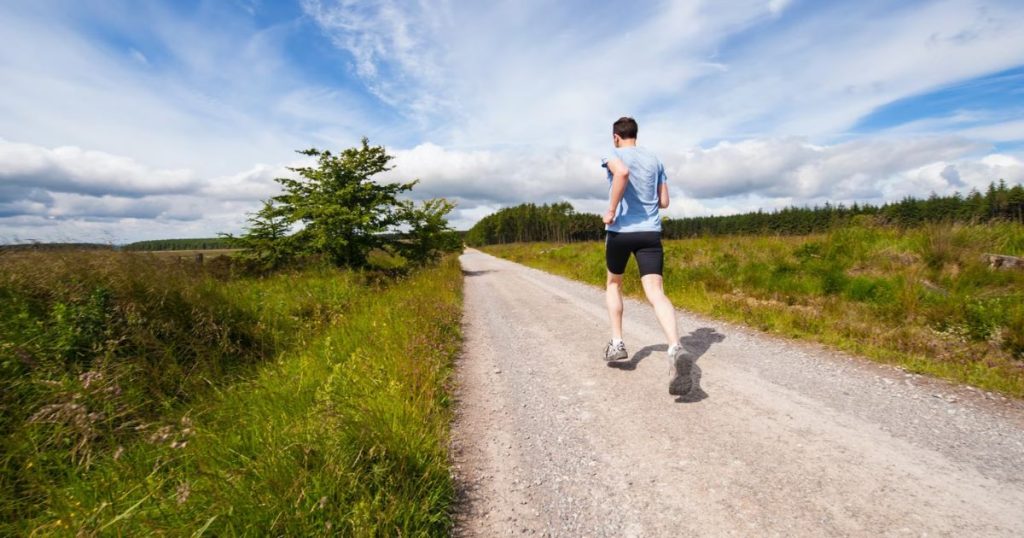Ever dreamed of conquering 200 miles on foot? Whether you’re an experienced hiker or a novice adventurer, tackling this epic distance is no small feat.
It’s a journey that’ll test your physical endurance and mental fortitude, pushing you to your limits and beyond.
But how long does it actually take to walk 200 miles? Let’s dive in and explore this incredible challenge.
Breaking Down the 200-Mile Journey
Before we lace up our boots and hit the trail, let’s crunch some numbers. The time it takes to walk 200 miles can vary wildly depending on a multitude of factors. But for a rough estimate, let’s consider an average walking speed of 3 miles per hour.
At this pace, walking non-stop (which isn’t realistic, of course), you’d cover 200 miles in about 66 hours. That’s nearly three days of continuous walking! But don’t worry – nobody expects you to walk for 72 hours straight. In reality, most folks tackle a journey like this over the course of 10 to 14 days.
Here’s a quick breakdown:
| Days | Average Daily Distance | Total Distance |
| 10 | 20 miles | 200 miles |
| 12 | 16.7 miles | 200 miles |
| 14 | 14.3 miles | 200 miles |
Remember, these are just averages. Your actual daily distance might vary depending on the terrain, your fitness level, and how you’re feeling each day.
More Post:
How Long Does It Take to Walk 20 Miles by Age and Gender?
What’ll Make or Break Your Epic Trek
Now that we’ve got a rough idea of the timeframe, let’s dive into the factors that’ll influence your 200-mile walk. These elements can either speed you up or slow you down, so it’s crucial to consider them in your planning.
1. Fitness Level and Training
Your physical condition is the cornerstone of your journey. The fitter you are, the faster and more comfortably you’ll be able to walk. But don’t worry if you’re not an Olympic athlete – with proper training, anyone can build up the endurance for a 200-mile walk.
Training Tips:
- Start with shorter walks and gradually increase distance
- Incorporate strength training for your legs and core
- Practice walking with a loaded backpack
- Aim for at least 3 months of dedicated training before your big walk
2. Terrain and Elevation
The landscape you’re traversing can dramatically impact your speed. A flat, paved path is a breeze compared to a rocky mountain trail. Elevation changes, in particular, can slow you down significantly.
Consider this:
- Flat terrain: You might maintain 3-4 mph
- Hilly terrain: Your pace could drop to 2-3 mph
- Mountainous terrain: Expect 1-2 mph or even slower
3. Weather Conditions
Mother Nature can be your best friend or your worst enemy on a long walk.
Ideal conditions (mild temperatures, low humidity, no precipitation) will help you maintain a steady pace. But extreme heat, cold, or rain can slow you down and potentially create dangerous situations.
“There’s no such thing as bad weather, only inappropriate clothing.” – Sir Ranulph Fiennes
This quote highlights the importance of being prepared for any weather conditions you might encounter.
4. Gear and Load
The weight on your back can make a big difference in your speed and endurance. Every pound matters when you’re walking 200 miles. Pack smart, focusing on lightweight, multi-purpose gear.
Essential Gear:
- Comfortable, broken-in hiking boots
- Moisture-wicking clothing
- High-quality backpack
- First aid kit
- Navigation tools (map, compass, GPS)
- Water filtration system
Mapping Out Your Long-Distance Walk

Planning is crucial for a successful 200-mile walk. Here’s how to break it down:
- Set realistic daily goals: Aim for 15-20 miles per day to start, adjusting as needed.
- Plan rest days: Schedule a rest day every 4-5 days to recover and prevent burnout.
- Map your route: Research terrain, elevation, and potential campsites or accommodations.
- Prepare your nutrition strategy: Plan for about 3,000-5,000 calories per day, depending on your size and the difficulty of the terrain.
More Post:
How Hot Is a Sauna? The Complete Guide To The Best Sauna Temperature
The Nitty-Gritty of Walking 200 Miles
Once you’re on the trail, your daily routine becomes crucial. Here’s what a typical day might look like:
- 5:00 AM: Wake up, break camp
- 6:00 AM: Start walking
- 9:00 AM: Short break for snack and rest
- 12:00 PM: Lunch break
- 1:00 PM: Resume walking
- 4:00 PM: Afternoon break
- 7:00 PM: Set up camp, dinner, rest
Remember, listening to your body is key. If you need more breaks, take them. It’s better to walk slower and steadier than to burn out early.
You’ve Done It! Now What?
Completing a 200-mile walk is an incredible achievement. Here’s how to recover and reflect:
- Rest: Give your body time to recover. Expect to feel tired for several days after.
- Reflect: Journal about your experience. What did you learn? How did you grow?
- Celebrate: You’ve accomplished something amazing. Treat yourself!
Your Burning Questions About Long-Distance Walking
How long does 100 miles take to walk?
At an average pace of 3 mph, walking 100 miles would take about 33 hours of continuous walking. Realistically, most people would complete this over 5-7 days.
How many miles can you walk in 1 hour?
On flat terrain at a moderate pace, most people can walk 3-4 miles in an hour.
How many miles is 2 hours walking?
In 2 hours, at an average pace, you could walk 6-8 miles on flat terrain.
How long is 200 miles in hours?
At a steady 3 mph pace, 200 miles would take about 66 hours of continuous walking. However, this doesn’t account for rest, sleep, or varying terrain.
Wrapping Up Your 200-Mile Adventure
Walking 200 miles is a monumental challenge, but with proper planning, training, and determination, it’s an achievable goal. Whether it takes you 10 days or 14, the experience of covering such a vast distance on foot is truly transformative.
Remember, the journey is just as important as the destination. Every step brings you closer to your goal, but also offers a chance to connect with nature, challenge yourself, and discover inner strengths you never knew you had.
So, lace up those boots, pack your bag, and take that first step. Your 200-mile adventure awaits!

I founded the sports news website SportRevUp in 2022 to deliver breaking news and in-depth analysis on major leagues like the NFL, NBA, and MLB.
With years of experience reporting on professional sports, I created an ad-free platform for engaging coverage and discussion as editor-in-chief overseeing all content strategy.
I continues developing SportRevUp to provide sports fans the news and discussion they crave about favorite teams and athletes.
